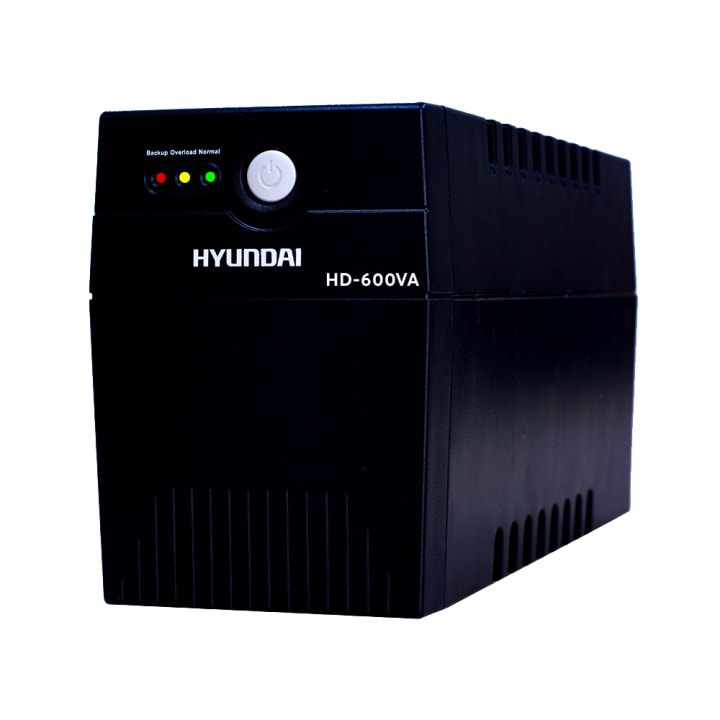
In today's world, where we are heavily reliant on electronic devices, power outages can be a significant issue. That's where UPS, or uninterruptible power supply, comes into play. In this article, we will discuss what UPS is, its various applications in daily life, and how it works.
1, What is UPS?
UPS (Uninterruptible Power Supply) is an electronic device that provides backup power when the primary source fails. It ensures that the connected equipment does not suffer any damage due to power fluctuations or outages. The UPS system comprises a battery, an inverter, and a charger. When the power supply is steady, the charger charges the battery. In case of a power outage, the inverter switches on and supplies power to the connected devices, ensuring that they remain functional.
UPS has several applications in daily life. It is commonly used in homes to provide backup power to critical appliances, such as refrigerators, air conditioners, and computers. In commercial settings, UPS is essential for data centers, where a power outage can lead to significant data loss. Medical facilities also use UPS to power critical equipment, such as ventilators and monitors.
>View more: https://mayphatnhapkhau.vn/bo-luu-dien-ups-la-gi/
Here are some of the most common applications of UPS:
1, Applications of UPS
- Home appliances: UPS can be used to power critical home appliances, such as refrigerators, air conditioners, and computers.
- Data centers: Data centers rely on UPS to ensure uninterrupted power supply to critical servers and networking equipment.
- Medical equipment: UPS is crucial for powering critical medical equipment, such as ventilators and monitors.
- Industrial equipment: UPS can be used to power industrial equipment, such as pumps and motors, which require a constant power supply.
2, How does UPS work?
UPS works by converting DC power from its battery into AC power, which is used by the connected equipment. The battery is charged when the primary power source is available, and the inverter is activated when the primary power source fails. UPS systems can be classified into three types:
- UPS Offline : In standby UPS, the connected equipment runs on the primary power source until it fails. Once the primary power source fails, the standby UPS switches to the battery.

- Line-interactive UPS: In line-interactive UPS, the connected equipment runs on the primary power source, which is regulated by the UPS. When the primary power source fails, the UPS switches to the battery.
- Online UPS: In online UPS, the connected equipment always runs on the UPS's battery, which is continuously charged by the primary power source. In case of a power outage, the UPS continues to power the equipment.

3, Which famous brands produce UPS?
There are several famous brands that produce UPS systems. Some of the well-known brands include:
APC:
APC (American Power Conversion) is a leading provider of UPS systems, with a wide range of products for home, small business, and enterprise applications.
CyberPower:
CyberPower is another popular brand that offers a wide range of UPS systems for different applications, including home, office, and data center use.
Eaton:
Eaton is a global provider of power management solutions, including UPS systems, for different industries and applications.
Tripp Lite: Tripp Lite is a well-known brand that offers a range of power protection solutions, including UPS systems, for home, office, and industrial use.
Vertiv:
Vertiv (formerly Emerson Network Power) is a global provider of power and cooling solutions, including UPS systems, for different industries and applications.
Schneider Electric:
Schneider Electric is a multinational company that offers a range of energy management and automation solutions, including UPS systems, for different applications.
Hyundai:
Hyundai is a well-known brand in the automotive industry, but they also manufacture a range of other products, including UPS systems. Hyundai Power Products, a division of Hyundai Corporation, produces a range of UPS Hyundai systems for different applications, including home, office, and industrial use.
Hyundai UPS systems are designed to provide reliable backup power in case of a power outage or fluctuation, protecting connected equipment from damage. They feature advanced technologies such as automatic voltage regulation (AVR), which ensures a stable output voltage, and overload protection, which prevents damage to the UPS and connected devices.
Hyundai offers a variety of UPS models with different capacities and features, including line-interactive and online UPS systems. The company also provides comprehensive customer support, including technical assistance and warranty services.
While Hyundai may not be as well-known in the UPS industry as some other brands, their UPS systems have received positive reviews from customers for their reliability and performance. As with any UPS purchase, it's essential to consider factors such as capacity, runtime, and specific application requirements when choosing a Hyundai UPS system.
These are just a few of the many brands that produce UPS systems. When choosing a UPS, it's essential to consider factors such as the required capacity, runtime, and the specific application for which it will be used.
4, Instructions for using UPS
Here are some general instructions for using a UPS (Uninterruptible Power Supply):
Plug in the UPS: First, connect the UPS to a power outlet using the provided power cord.
Connect your devices: Next, connect the devices you want to protect to the UPS using the provided cables. Make sure you connect each device to the appropriate outlet on the UPS.
Charge the UPS battery: Most UPS systems require an initial charge before use. Plug in the UPS and let it charge for at least 4-6 hours before using it for the first time.
Turn on the UPS: Once the battery is charged, turn on the UPS using the power switch. You should see a light indicating that the UPS is on and ready to provide backup power.
Monitor the UPS: Check the status of the UPS periodically to ensure that it's functioning properly. Many UPS systems have a display that shows the battery level, input voltage, and other useful information.
Test the UPS: Test the UPS periodically to make sure it's working correctly. Many UPS systems have a self-test feature that you can activate to check the battery and other components.
Shut down devices properly: In the event of a power outage, the UPS will provide backup power to your devices. Be sure to shut down your devices properly to avoid data loss or damage to hardware.
Replace the battery when needed: UPS batteries have a limited lifespan and will need to be replaced periodically. Check the manufacturer's recommendations for battery replacement and follow their instructions to replace the battery.
These are some basic instructions for using a UPS. Be sure to read the manufacturer's instructions carefully for your specific model and follow their recommendations for optimal performance and safety.
About the Creator
Jean
What does the Baudouin generator engine have? That is the question you are asking. Find out more about this machine on our blog.






Comments
There are no comments for this story
Be the first to respond and start the conversation.